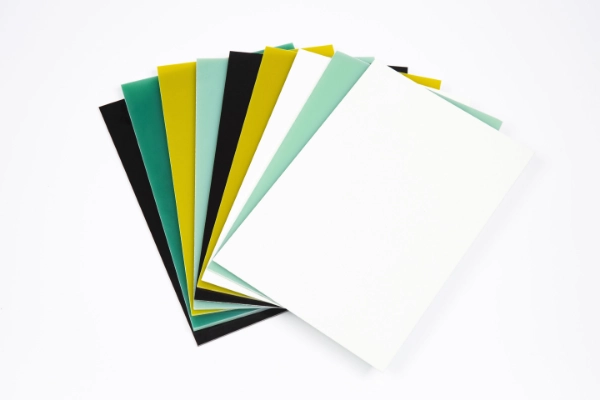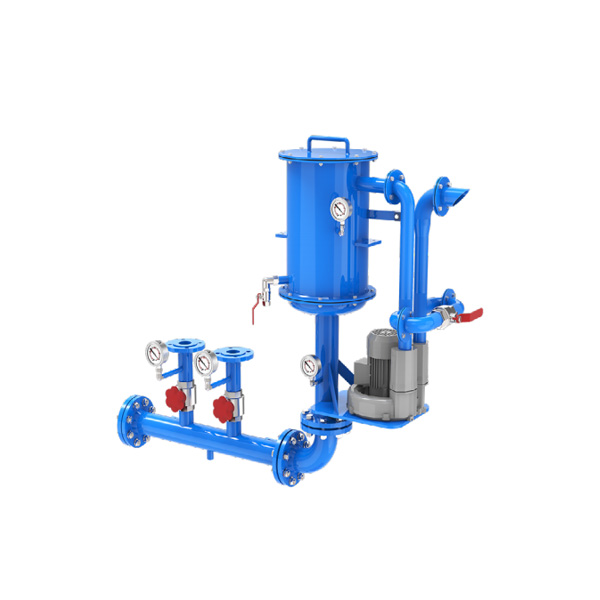Mechanical Strength of G10 Epoxy Glass Laminate Board
4 min readG10 epoxy glass laminate boards, widely used in applications demanding electrical insulation, strength, and durability. In this article, Hangzhou Blue Sun will share the mechanical properties of G10 epoxy glass laminate board for sale, the parameters influencing it, and how it performs under various stresses.
Key Mechanical Properties of G10 Epoxy Glass Laminate Board
1. Tensile Strength
Tensile strength is a critical measure of G10' s ability to withstand stretching or pulling forces. G10 typically exhibits tensile strength in the range of 310–450 MPa (45,000–65,000 psi). The high tensile strength of G10 results from the interwoven glass fibers within the epoxy resin matrix, which carry the load evenly and resist breaking. This property makes G10 ideal for applications requiring sustained tensile loads, such as structural supports and mounting boards.
2. Compressive Strength
Compressive strength measures how well G10 resists crushing or squashing forces. G10' s compressive strength can reach up to 400 MPa (58,000 psi), making it suitable for high-load-bearing applications. In scenarios where G10 is subjected to compressive forces, the dense epoxy resin matrix prevents the fibers from buckling, while the glass fabric reinforcement maintains structural integrity, even under extreme stress.
3. Flexural Strength
Flexural strength, or bend strength, is a measure of a material' s ability to resist deformation under bending. G10 has a flexural strength of around 400–500 MPa (58,000–72,500 psi), depending on the thickness and composition. This high flexural strength is due to the interwoven structure of the glass fabric layers, which distribute the stress and prevent localized failure.
4. Shear Strength
Shear strength is essential in determining how well G10 can resist forces that would cause internal layers to slide over each other. With typical shear strength values of around 40–60 MPa (5,800–8,700 psi), G10 can withstand moderate shearing forces, though it is not as resilient to these as it is to tensile and compressive forces. This makes G10 better suited for applications where loading is applied perpendicular to the laminate layers, as excessive shearing along these planes can weaken the bond between layers.
5. Impact Strength
Impact resistance is important in applications where G10 is subject to sudden or dynamic loads. G10 exhibits moderate impact strength, as the epoxy matrix can be somewhat brittle. However, the woven glass fibers help dissipate impact energy, preventing cracks from propagating quickly through the material. G10 is, therefore, moderately effective in applications where impact resistance is necessary, but it is not ideal for situations with high-impact demands.

Factors Affecting the Mechanical Strength of G10 Epoxy Glass Laminate Board
1. Fiber Content and Orientation
The volume and arrangement of glass fibers in the epoxy matrix directly affect strength. Higher fiber content typically improves tensile and flexural strengths since more fibers bear the load. Additionally, the orientation of fibers plays a significant role; fibers aligned in the direction of applied force enhance the laminate' s strength in that direction. Woven glass fabric, often used in G10, ensures multi-directional strength.
2. Curing Process
Proper curing of the epoxy resin is essential to maximize the laminate' s mechanical properties. Incomplete or uneven curing can lead to weak spots, reducing overall strength. Typically, G10 is cured under specific temperatures and pressures to ensure a fully cross-linked epoxy matrix, which provides a strong bond between fibers and resin, enhancing mechanical performance.
3. Moisture Content
G10 exhibits good moisture resistance, but prolonged exposure to moisture can slightly reduce its mechanical properties. Water absorption can soften the epoxy matrix, which can lower tensile and compressive strengths over time. Therefore, for applications in humid environments, G10 can be treated or coated to reduce moisture ingress, preserving its mechanical properties.
4. Temperature Stability
G10 maintains its strength in a broad temperature range, typically from -60°C to 140°C (-76°F to 284°F). However, at elevated temperatures, the epoxy matrix begins to soften, reducing its load-bearing capacity. Applications in high-temperature environments may require consideration of alternative materials or additional cooling mechanisms to ensure long-term reliability.
Testing Mechanical Strength in G10 Epoxy Glass Laminate Board
To ensure G10 epoxy glass laminate meets application-specific requirements, various testing methods are used:
1. Tensile Testing
Tensile tests are conducted per ASTM D638 standards, where a sample is pulled until failure. This test measures tensile strength and modulus of elasticity, providing critical information about G10' s load-bearing capacity under stretching forces.
2. Compression Testing
Compression tests, as per ASTM D695, involve applying compressive forces to a sample. This test is essential in assessing G10' s ability to withstand loads without crushing, crucial for applications where the material acts as a support or bearing structure.
3. Flexural Testing
Flexural testing, following ASTM D790, measures the material' s resistance to bending. G10' s flexural strength and modulus can be derived, indicating its suitability for applications involving bending forces.
4. Impact Testing
Impact tests assess G10' s response to sudden forces. The Charpy or Izod impact tests are common, though G10 may exhibit brittle failure due to its epoxy matrix. This information helps designers anticipate performance under dynamic conditions.
Conclusion
The mechanical strength of G10 epoxy glass laminate board makes it an ideal choice for applications requiring reliable structural performance and insulation. Its tensile, compressive, flexural, and shear strengths allow it to excel under various loading conditions, while factors like fiber orientation, curing, and moisture management further optimize its performance. However, certain limitations, such as its moderate impact resistance and susceptibility to moisture over prolonged periods, should be considered in design and application decisions. As a versatile composite, G10' s balance of mechanical, thermal, and electrical properties continues to make it invaluable across industries, from aerospace to electronics and industrial machinery.
https://www.bluesun-elec.com.cn/Mechanical-Strength-of-G10-Epoxy-Glass-Laminate-Board.html
www.bluesun-elec.com.cn
Blue Sun

